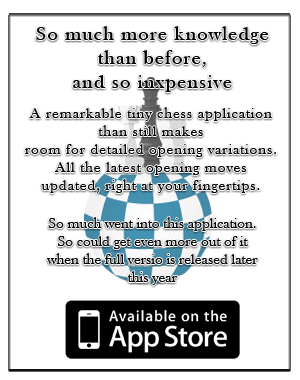ENDGAME
Also called “ending,” it is the third and final phase of the game, in which each player has relatively few pieces remaining. Theoretically, the strategical objective for the endgame is carrying out an attack to the opponent’s king that should result in a checkmate. In practice, most often the objective is to promote a pawn to the queen and thus gain the necessary material advantage. Lack of skill may hinder a player’s advancement: for example, three of five losses sustained by David Bronstein in his drawn championship match with Mikail Botvinnik in 1951 were caused by weak endgame play. Aron Nimzovitch pointed out that ‘eighty per cent of the whole of the end-game technique rest on combined play’. An outstanding contribution to the study of endings was made by Philidor, this, in its turn, provided the headlines for Berger’s classical work “Analysis of the chess play” (1891).The first work to be devoted wholly to the practical endgame was by Durand and Preti (1871-3). Today the major references are Edward Cecil Tattersall (1910-1911), Aleksey Troitzky (1937), Lommer and Sutherland (1938), Ruben Fine (1941), Henri Rink (1950), André Chéron (1952-1958) and Yuri Averbakh (1956), Vladimir Korolkov (1958), Tigran Gorgiev (1958), Genrikh Kasparyan (1959) and later Jonathan Speelman (1981), John Nunn (1994), Alexander Beliavsky and Adrian Mikhalchishin (1995-2003), Mark Dvoretsky (2003). The maximum number of moves required to deliver mate from the worst possible starting position are as follows: Rook and Bishop vs. two Knights – 223 moves; Queen vs. two Bishops – 71 moves; Queen and Rook vs. Queen – 67 moves; two Bishops vs. Knight – 66 moves; Queen vs. two Knights – 63 moves and Rook and Bishop vs. Rook – 59 moves. [nggallery id=75]



